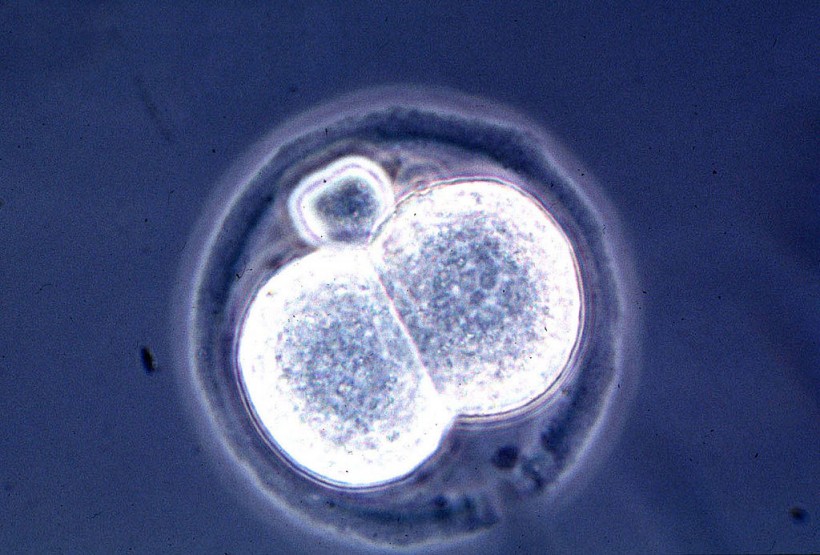Stem cells are the master cell in the body that can develop into almost any cell type. According to a press release, researchers from the University of Cambridge and the California Institute of Technology (Caltech) created model mouse embryos with beating hearts, foundations for a brain, and other organs in a mouse.
A group of biologists conducted the research at both institutions. The findings culminate over decade-long research that could help researchers understand embryos and can be a guide for repairing or developing synthetic human organs.

Microscopic View Of A Two Cell Mouse Embryo, A Result Of A New And Relatively Simple Cloning Technique Discovered By Scientists At The University Of Hawaii July 1998.
The 'Holy Grail' in Developing Synthetic Embryos
The lab-grown mouse embryos were incubated and survived for 8.5 days, almost half the length of a typical rat pregnancy. They were stored in a device like a fast-spinning Ferris wheel full of tiny glass vials in which a yolk sac developed around the embryos to supply nutrition.
The embryos have digestive tracts, neural tubes or the foundation of the central nervous system, beating hearts, and brains with well-defined sections, such as the forebrain and midbrain. Researchers described the embryos in their paper, titled "Synthetic Embryos Complete Gastrulation to Neurulation and Organogenesis," published in Nature's journal.
The embryos were developed without using egg or sperm; instead, they mimicked the natural processes in the lab using three types of stem cells found in early mammalian development.
They induced the expression of a set of genes and established a unique environment to trigger the stem cells and self-organize into structures through progressive developmental stages until they have beating hearts and foundations of a brain. To date, it is the most advanced stage of development in a stem cell-derived model.
Researchers noted that the major advance in this study is generating the entire brain, particularly the anterior region, which is considered the "holy grail" in developing lab-grown embryos.
Senior study author Magdalena Zernicka-Goetz, a developmental and stem cell biologist at the University of Cambridge and Caltech, said in the press release that their findings had been the dream of their community for years a major focus of their work for more than a decade.
Synthetic Embryos Give Insights into Human Embryonic Development
Before the study in Nature was published, similar research was published in Cell a few weeks ago. According to Live Science, both studies developed lab-grown embryos despite having dissimilar methods. Studying such models hints at how the earliest stages of human embryonic development unfold and what happens when something goes awry.
Zernicka-Goetz said that this stage is so mysterious, and it is amazing to see it happen in a dish to understand why so many pregnancies fail and how it could be prevented. Their study showed how different types of stem cells develop and what could go wrong.
In both studies, the resulting synthetic embryos closely resemble natural embryos, albeit with slight differences. However, the studies showed a very low proportion of stem cells could give rise to embryos, suggesting that both systems' efficiency could be improved. Also, neither set of synthetic embryos survived the ninth day of development, which must be overcome in future studies.
RELATED ARTICLE: World's First Synthetic Embryo Grows Without Sperm, Egg Cell, and Uterus
Check out more news and information on Biology in Science Times.














